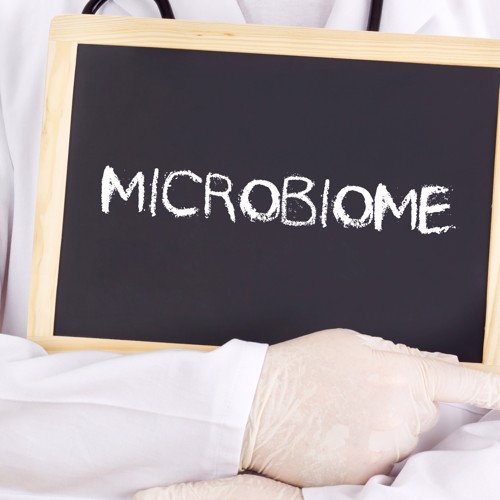Microbiotoxicity
NO
PHARMACEUTICAL INFLUENCE
Microbiotoxicity

Interest in the role of the gut microbiome in general health and wellbeing has been growing exponentially in the last few years. People are increasingly invested in how their diet could impact on their microbiome, with sales of products purported to feed these microbes growing year on year (kefir anyone?). A recent demonstration of the cross-sectional appeal is the widespread reporting by the mainstream media of the latest instalment from the ZOE PREDICT 1 cohort published in the European Journal of Nutrition, showing an association between social jetlag (different sleeping times at the weekend versus the week), poorer diet, and a disadvantageous gut microbiome.
So what is the microbiome? It is the total community of living microorganisms colonizing the body, along with their metabolites. Far from being inert guests that occasionally cause mischief through overstepping boundaries, many of these bacteria play an active role in human physiology. Gut colonising bacteria produce essential vitamins, bile salts, short chain fatty acids and neurotransmitters. The gut microbiome is thought to be involved in the regulation of immunity, inflammation, energy metabolism, gut barrier integrity and the containment of pathogens. Interesting stuff!
So how is this relevant to antibiotic use in primary care? Enter the timely review article ‘Microbiotoxicity: antibiotic usage and its unintended harm to the microbiome’ published in Current Opinion in Infectious Diseases, July 2023. It discusses the current evidence on the potential links between microbiome dysregulation and disease.
It goes without saying that antibiotics kill bacteria. The authors suggest a new term ‘microbiotoxicity’ to describe the unintended harms of antibiotics on the patient’s microbiome. They advocate for the risks of microbiotoxicity to the individual patient being considered by the clinician; and explicitly discussed with the patient as a side effect of antibiotic treatment.
Some of these potential harms are well established. We are all familiar with the concept of antibiotic use causing temporary disruption to the balance of micro-organisms, allowing pathogens to flourish. Immediately following antibiotic use there is a reduction in bacterial diversity, and especially in health associated bacteria such as Bifidobacterium, Lactobacillus and Bacteroides species. Key examples of complications include C. difficile infection, bacterial vaginosis and thrush. In addition, studies show an increase in the total burden of AMR (antimicrobial resistance) genes in the host’s gut after antibiotics, which may lead to infections with AMR pathogens.
In many cases microbiome dysregulation settles within a few weeks. However, some studies report a much longer duration of effect, with some citing ongoing disturbance a year later. The important question is what is the clinical significance of this?
Microbiome dysregulation has been associated with the subsequent development of obesity, asthma, diabetes, IBD and colorectal cancer. For example, antibiotic use in infancy is associated with a reduction in gut microbiota diversity and meta-analyses show that infants treated with antibiotics are 37% more likely to develop asthma than those that didn’t, 82% more likely if exposure was during the first week of life.
As in this case most of the current research linking microbiome dysregulation to long-term ill heath comes from observational studies, providing evidence of association but not causation. However, there is also a growing body of interventional research. Mouse models show colitis is induced and/or worsened by antibiotics, and that this pathology can then be passed on to other germ free mice receiving a stool transplant from the affected mouse. Further research is ongoing to establish causation and applicability to humans.
Not all patients and antibiotics are equal - the paper sets out a framework for assessing the risk of microbiotoxicity. Host risk factors include extremes of age, pregnancy and inflammation/ intercurrent illness. Broader spectrum antibiotics (especially those with gram negative or anaerobic activity) and regimes including multiple drugs are more toxic. Antibiotics with activity against health-associated gut anaerobes ( e.g. co-amoxiclav) have a greater risk of C. difficile infection. The duration of treatment is important - a study on neonatal ICU patients showed a 16-18% reduction in health-associated anaerobes and butyrate-producing bacteria per additional day of treatment.
So what is the take home message? An increasing body of evidence points to the importance of the microbiome to human health. Antibiotics, when used appropriately for high risk infections are life saving and clearly necessary. However, there are many situations where the decisions are more nuanced.
This paper concludes ‘first do no harm, microbes and all’. Does the patient really need antibiotics? Weigh up risk of serious infection versus risk of microbiotoxicity (and other side effects). Consider framing the conversation with the patient in these terms - it may provide another angle to help people understand why antibiotics are often not in their best interests. This approach to antibiotic stewardship plays to the strengths of primary care - putting the needs of the individual patient front and centre. If treatment is needed choose short course, narrow spectrum, single agent antibiotics where possible.
What about my patient with the positive wound swab? Prescribing just based on a swab result is clearly not best practice - sadly for my lunch the patient needed a more detailed review.
Dr Laura Darby
16th August 2023
Join us at one of our upcoming courses or live webinars

Recent NB Blogs
Need an immediate update? – all our courses are available on demand
Did you find this useful?
You can quickly add CPD to your account by writing a reflective note about the Microbiotoxicity post you've read.
Log in to your NB Dashboard and use the 'Add Reflective Note' button at the bottom of a blog entry to add your note.

